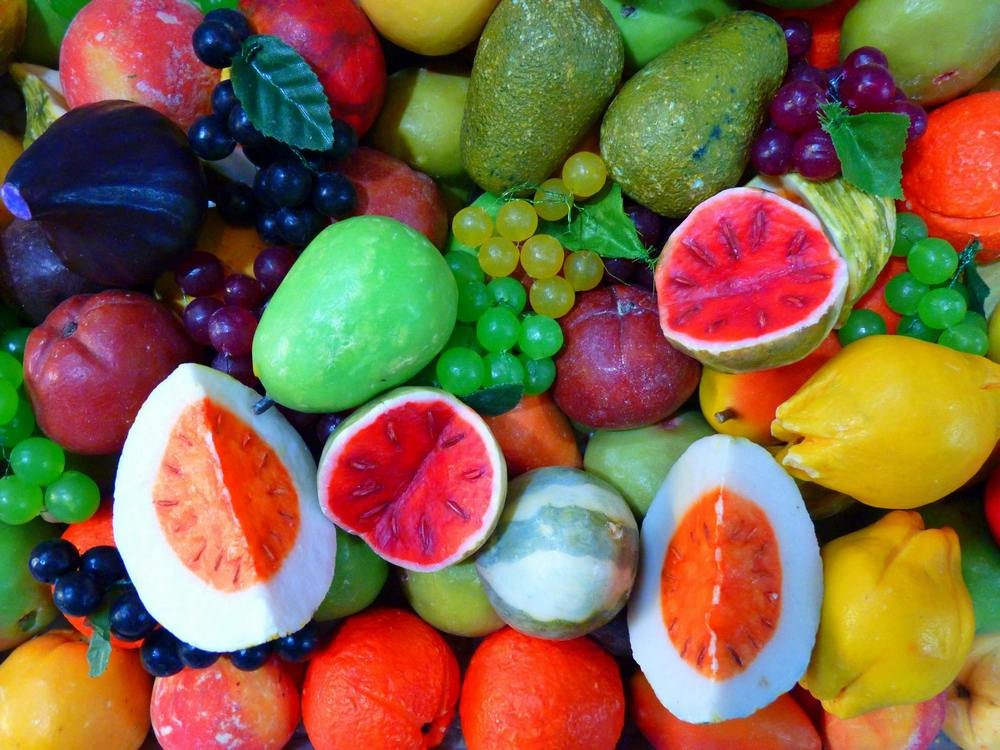In this article, we’ll explore the top 10 winter fruits to enjoy during the colder months. From sweet and juicy to tart and crisp, these fruits are sure to add some seasonal flair to your meals.
The Best Top 10 Winter Fruits to Enjoy
Table of Contents
Why Eat Seasonal Fruits?

by César Guel (https://unsplash.com/@cesarguel)
Eating fruits that are in season during the winter has many benefits. Firstly, these fruits are picked at their peak ripeness, meaning they are at their most flavorful and nutritious. They also tend to be more affordable since they don’t have to be shipped from faraway places.
Eating seasonal fruits also supports local farmers and reduces the carbon footprint associated with importing out-of-season produce. Plus, it allows for a more varied and diverse diet, as you are not limited to the same fruits year-round.
What Qualifies as a Winter Fruit?
There are a few different ways to define what fruits are considered “winter fruits.” In general, winter fruits are those that are harvested during the winter season, typically from October to March in the Northern Hemisphere.
Some fruits are only available during the winter months, while others may be available year-round but are at their peak during the colder season. It’s important to note that the availability of produce may vary depending on your location and climate.
Seasonal Eating and Health Benefits
Winter fruits are not only delicious but also come packed with vitamins, minerals, and antioxidants that can help boost your immune system during the colder months. Consuming a variety of fruits can also improve your overall health and may reduce the risk of chronic diseases.
Economic and Environmental Advantages
By choosing to eat seasonal fruits, you’re likely to enjoy lower prices and fresher produce. Economically, you support the local economy and small-scale farmers. Environmentally, you contribute to reducing the energy and resources used for transportation and storage of non-seasonal produce.
You May Also Like: 10 proven strategies for successful weight loss
Top 10 Winter Fruits to Enjoy
Here are our top picks for the best winter fruits to enjoy:
1. Citrus Fruits

by Eve Maier (https://unsplash.com/@maierfoto)
Citrus fruits are the stars of the winter season, offering a burst of bright and tangy flavor. This category includes oranges, grapefruits, lemons, limes, and tangerines. Not only are these fruits refreshing and delicious, but they are also packed with vitamin C, making them great for boosting your immune system during cold and flu season.
Varieties of Citrus Fruits
There are numerous varieties of citrus fruits to explore during winter. From the sweet clementines to the bitter Seville oranges used for marmalades, each type brings its own unique taste and nutritional profile to the table.
Citrus in Cooking and Baking
Citrus fruits are incredibly versatile in the kitchen. They can be used to add zest to baked goods, bring acidity to marinades and dressings, or provide a fresh, juicy contrast in salads and desserts.
2. Pomegranates

by Mockup Graphics (https://unsplash.com/@mockupgraphics)
Pomegranates are a winter superfood, packed with antioxidants and anti-inflammatory properties. Their ruby-red arils offer a juicy and sweet-tart flavor that can add a pop of color and flavor to any dish. Try adding them to salads, yogurt, or even using them as a garnish for cocktails.
Health Benefits of Pomegranates
The high antioxidant content in pomegranates is known to fight free radicals and reduce inflammation. They are also rich in fiber, which aids digestion, and contain vitamins C, K, and folate.
Pomegranate in Holiday Recipes
Pomegranates are a festive addition to holiday meals. They can be sprinkled over roasted vegetables, incorporated into stuffings, or used to create a vibrant glaze for meats.
3. Persimmons

by Kentaro Toma (https://unsplash.com/@thirdcultureken)
Persimmons are another unique and flavorful winter fruit. They have a sweet and mild flavor with a soft and creamy texture. They can be eaten fresh or used in baked goods, and are a great source of vitamin A, C, and fiber.
Types of Persimmons
There are several types of persimmons, including the Fuyu and Hachiya varieties. Fuyu persimmons are squat and can be eaten like an apple, while Hachiya persimmons are acorn-shaped and should be consumed when very ripe to avoid astringency.
Persimmons in Savory Dishes
Persimmons can be used in a range of savory dishes. Their sweetness complements the flavors of roasted meats and pairs well with strong cheeses in salads. They can also be transformed into sauces and chutneys.
4. Pears

by Jonathan Mast (https://unsplash.com/@jonathanmast)
Pears are a classic winter fruit that offers a delicate and slightly sweet flavor. They can be enjoyed fresh, poached, or added to salads and desserts. Pears are also a good source of fiber and vitamin C.
Pear Varieties for Winter
Winter is the perfect time to explore different varieties of pears, such as Bosc, Anjou, and Comice. Each type offers a distinct texture and sweetness level, making some better for cooking and others ideal for eating raw.
Using Pears in Desserts
Pears are a natural fit for desserts. They can be baked into tarts, cakes, and crumbles, or poached in wine or spices for an elegant end to a meal. Their subtle sweetness also pairs well with dark chocolate.
5. Apples

by Marek Studzinski (https://unsplash.com/@jccards)
Apples may be available year-round, but they are at their peak during the fall and winter months. With a variety of flavors and textures to choose from, apples are a versatile fruit that can be enjoyed in both sweet and savory dishes. Plus, they are a good source of fiber and vitamin C.
Apple Varieties for Every Taste
From the tart Granny Smith to the sweet Honeycrisp, there’s an apple variety to suit every palate. Try experimenting with different types in your cooking to find your favorite.
Apples in Savory Recipes
Apples can add a sweet crunch to salads, a tart contrast in sandwiches, and can even be roasted alongside meats for a comforting winter dish. Their versatility extends far beyond the typical apple pie.
6. Kiwi

by engin akyurt (https://unsplash.com/@enginakyurt)
Kiwi may not be the first fruit that comes to mind when you think of winter, but it is actually in season during the colder months. These fuzzy little fruits have a tangy and refreshing flavor and are packed with vitamin C and potassium.
Nutritional Power of Kiwi
Kiwi is a nutrient-dense fruit with a high vitamin C content that surpasses even oranges. It’s also rich in dietary fiber, which promotes digestive health, and contains vitamin K and vitamin E.
Kiwi in Exotic Salads
Adding kiwi to your salads can introduce an exotic twist to your winter meals. Its vibrant green color and unique flavor pair well with other fruits, leafy greens, and nuts.
You May Also Like: Dietworks Apple Cider Vinegar
7. Cranberries

by Davies Designs Studio (https://unsplash.com/@davies_designs)
Cranberries are a staple of the holiday season, but they can be enjoyed all winter long. These tart and tangy berries can be used in sauces, baked goods, and even cocktails. They are also a good source of antioxidants and have been linked to various health benefits.
Health Benefits of Cranberries
Cranberries are well-known for their potential urinary tract health benefits. They also contain compounds that may have anti-cancer properties and can support cardiovascular health.
Cranberries Beyond the Sauce
While cranberry sauce is a classic, these berries can also be dried and added to trail mixes, baked into muffins, or used as a tangy addition to smoothies.
8. Grapes

by Moritz Knöringer (https://unsplash.com/@mokngr)
Grapes are another fruit that is available year-round but is at its peak during the winter months. These juicy and sweet fruits come in a variety of colors and can be enjoyed as a snack, added to salads, or even used to make homemade jams and jellies.
Types of Grapes for Winter
In the winter, look for varieties like Concord or Red Globe grapes, which are in season and offer a deep, robust flavor. Seedless varieties are also popular for their convenience and can be found in green, red, and black.
Grapes in Cooking
Grapes can be roasted to concentrate their sweetness or added to grain salads for a pop of flavor. They also make a delicious addition to cheese platters and can be used to create delectable sauces for meats.
9. Figs

by Tom Hermans (https://unsplash.com/@tomhermans)
Figs are a unique and delicious winter fruit that is often overlooked. They have a sweet and slightly nutty flavor and a soft and chewy texture. Figs are also a good source of fiber and potassium.
Fresh vs. Dried Figs
While fresh figs have a delicate sweetness and are great in salads or as a snack, dried figs offer a more intense flavor and can be used in a variety of recipes, from oatmeal to baked goods.
Figs as a Gourmet Ingredient
Figs lend an upscale touch to any dish. They can be served with cheeses, wrapped in prosciutto, or caramelized for a decadent topping on desserts or savory dishes.
10. Clementines

by Monika Grabkowska (https://unsplash.com/@moniqa)
Clementines are a type of mandarin orange that is in season during the winter months. These small and easy-to-peel fruits are a great snack and are also packed with vitamin C and antioxidants.
Snacking and Portability
Clementines are the perfect on-the-go snack due to their size and ease of peeling. They fit easily into lunchboxes and can be a refreshing treat during the winter.
Clementines in Sweet and Savory Dishes
The sweetness of clementines complements many dishes, from topping morning oatmeal to adding a citrusy zing to roasted meats.
You might also like carefully selected Amazon best selling and top rated products and Accessories

How to Enjoy Winter Fruits
There are endless ways to incorporate winter fruits into your diet. Here are a few ideas to get you started:
- Add citrus fruits to salads or use their juice in dressings and marinades.
- Roast pears or apples with warm winter spices like cinnamon and nutmeg for a cozy dessert.
- Use persimmons in place of tomatoes in a winter caprese salad.
- Make a fruit salsa with pomegranate, kiwi, and grapes to serve with fish or chicken.
- Poach clementines in a spiced syrup for a simple and elegant dessert.
- Use cranberries to make a homemade sauce or add them to oatmeal or yogurt for a burst of flavor.
- Bake figs with honey and goat cheese for a delicious appetizer.
- Add grapes to a cheese plate for a sweet and savory snack.
Creative Breakfast Options
Start your day with a burst of flavor by incorporating winter fruits into your breakfast. Mix them into your yogurt, oatmeal, or pancake batter. You can also create a colorful fruit salad topped with a drizzle of honey.
Winter Fruit Desserts
Embrace the season’s flavors by making fruit the star of your desserts. From poached fruit to baked crisps and crumbles, there are plenty of ways to enjoy the natural sweetness of winter fruits.
Preserving Winter Fruits
Preserving fruits by making jams, jellies, and preserves is a great way to enjoy their flavors year-round. You can also freeze or dehydrate fruits for later use in smoothies, baking, or snacking.
Final Thoughts
Winter may not be known for its abundance of fresh produce, but these top 10 winter fruits are sure to add some delicious and nutritious options to your meals. From tangy citrus fruits to sweet and crunchy apples, there’s something for everyone to enjoy during the colder months. So next time you’re at the grocery store, be sure to stock up on these seasonal favorites.



























